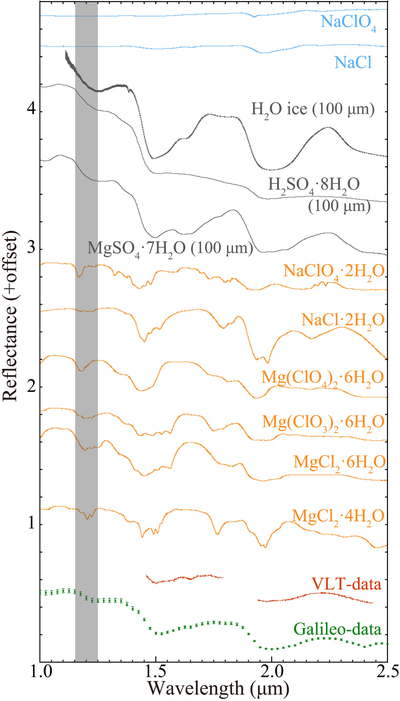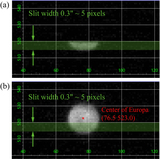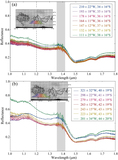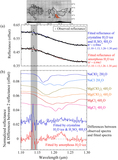Image Details

Caption: Figure 1.
Reflectance spectra of Cl-bearing salts, H2O ice, H2SO4 · 8H2O, MgSO4 · 7H2O, and Europa’s surface. Data of Cl-bearing salts were obtained at 80 K (derived from Hanley et al. 2014), except for NaCl · 2H2O at 100 K (derived from Fox-Powell et al. 2019). The spectrum of NaCl · 2H2O is derived from the natural sample possibly containing impurities. VLT and Galileo/NIMS spectra were obtained at coordinates 195°W, 0°N and 130°–260°W, 35°S–35°N and taken from Ligier et al. (2016) and McCord et al. (1999), respectively. Reflectance spectra of H2O ice, H2SO4 · 8H2O, and MgSO4 · 7H2O were calculated using the Hapke model (Hapke 1981, 1993, 2002) with the optical constants for amorphous H2O ice at 70–130 K (Mastrapa et al. 2008), H2SO4 · 8H2O at ∼77 K (Carlson et al. 2005), and MgSO4 · 7H2O at 120 K (Dalton & Pitman 2012). Reflectance spectra are shown with positive offsets for clarification. Gray bars represent the wavelengths corresponding to possible absorptions of hydrated Cl-bearing salts (1.15–1.25 μm).
Copyright and Terms & Conditions
© 2022. The Author(s). Published by the American Astronomical Society.












